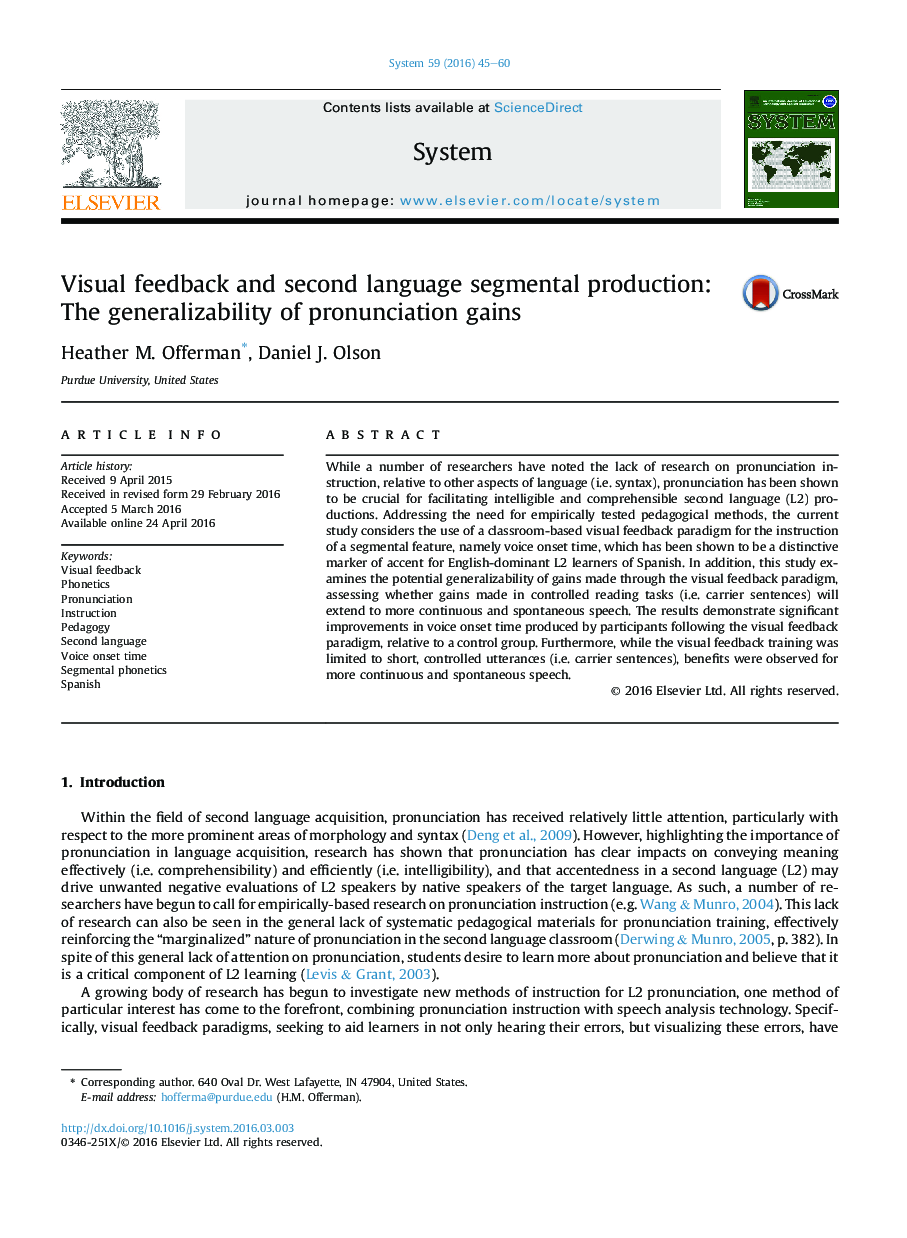| Article ID | Journal | Published Year | Pages | File Type |
|---|---|---|---|---|
| 372958 | System | 2016 | 16 Pages |
While a number of researchers have noted the lack of research on pronunciation instruction, relative to other aspects of language (i.e. syntax), pronunciation has been shown to be crucial for facilitating intelligible and comprehensible second language (L2) productions. Addressing the need for empirically tested pedagogical methods, the current study considers the use of a classroom-based visual feedback paradigm for the instruction of a segmental feature, namely voice onset time, which has been shown to be a distinctive marker of accent for English-dominant L2 learners of Spanish. In addition, this study examines the potential generalizability of gains made through the visual feedback paradigm, assessing whether gains made in controlled reading tasks (i.e. carrier sentences) will extend to more continuous and spontaneous speech. The results demonstrate significant improvements in voice onset time produced by participants following the visual feedback paradigm, relative to a control group. Furthermore, while the visual feedback training was limited to short, controlled utterances (i.e. carrier sentences), benefits were observed for more continuous and spontaneous speech.
